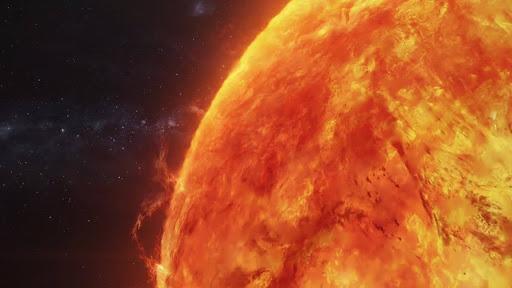
‘Peacock Jets’ on Sun Linked to Magnetic Flux Cancellation
The sun, our star and the center of our solar system, is a fascinating and complex celestial body. Its surface is constantly in motion, with magnetic fields, hot plasma, and solar flares all playing a crucial role in its dynamics. Recently, scientists have made a groundbreaking discovery about the sun’s lower atmosphere, revealing the existence of ‘peacock jets’, recurrent fan-shaped eruptions that have been puzzling researchers for years. In this blog post, we’ll delve into the fascinating world of solar physics and explore the latest findings on these remarkable ‘peacock jets’.
What are Peacock Jets?
Peacock jets are a type of solar phenomenon that has been observed in the sun’s lower atmosphere, known as the chromosphere. These fan-shaped eruptions are characterized by a sudden release of energy, which is thought to be powered by the cancellation of magnetic fields. This process, known as magnetic flux cancellation, occurs when opposing magnetic fields meet and vanish, releasing a massive amount of energy in the process.
The term ‘peacock jet’ was coined due to the striking resemblance of these eruptions to the colorful plumage of a peacock’s tail. The jets are typically several thousand kilometers long and can be seen erupting from the sun’s surface in a spectacular display of energy and light.
The Discovery
The discovery of peacock jets was made possible through the use of advanced telescopes and sophisticated computer simulations. Scientists from the Indian Institute of Astrophysics, in collaboration with researchers from the University of Cambridge, used a combination of observations and modeling to study the sun’s lower atmosphere.
The team analyzed data from the Solar Dynamics Observatory, a NASA spacecraft designed to study the sun’s magnetic field and its impact on the solar system. They also employed computer simulations to recreate the conditions on the sun’s surface and study the behavior of magnetic fields.
Magnetic Flux Cancellation: The Power Behind Peacock Jets
The researchers found that peacock jets are powered by a process known as magnetic flux cancellation, where opposing magnetic fields meet and vanish. This cancellation releases a massive amount of energy, which is then channeled into the jet, causing it to erupt from the sun’s surface.
Magnetic flux cancellation is a complex process that involves the interaction of multiple magnetic fields. The sun’s magnetic field is constantly changing, with new magnetic field lines emerging from the sun’s core and old ones disappearing at the surface.
When opposing magnetic fields meet, they can either cancel each other out or combine to form a stronger field. In the case of peacock jets, the cancellation of magnetic fields is thought to release a massive amount of energy, which is then channeled into the jet.
Implications for Space Weather and Technology
The discovery of peacock jets has significant implications for our understanding of space weather and its impact on our technology. Space weather refers to the dynamic and variable conditions on the sun and in the solar system, which can affect the Earth’s magnetic field and atmosphere.
Peacock jets are thought to play a crucial role in the formation of solar flares and coronal mass ejections, which can have significant impacts on our technology. These events can cause communication disruptions, damage to satellites, and even affect the power grid.
By studying peacock jets and the processes that power them, scientists can gain a deeper understanding of space weather and its impact on our technology. This knowledge can be used to develop more accurate forecasting models, which can help to protect our technology and infrastructure from the effects of space weather.
Conclusion
The discovery of peacock jets and their connection to magnetic flux cancellation is a significant breakthrough in our understanding of the sun’s lower atmosphere. These fan-shaped eruptions are a fascinating example of the complex and dynamic processes that occur on the sun’s surface.
As scientists continue to study peacock jets and the processes that power them, we can expect to gain a deeper understanding of space weather and its impact on our technology. This knowledge will be essential for predicting and mitigating the effects of space weather, and for safeguarding our technology and infrastructure.
Reference:
(Note: The news source is Research Matters, a leading platform for science and technology news in India.)






